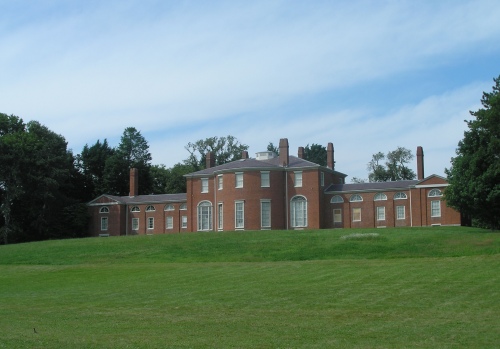Gore Place (1806)

Christopher Gore, born in Boston, was a lawyer and Federalist politician, who served as Governor of Massachusetts (1808-1810) and a United States Senator (1813-1816). Earlier, Gore had spent eight years in Britain, initially as a commissioner to the Jay Treaty in 1796. It was during this time, in 1799, that his country mansion in Waltham, built in 1793, burned down. Gore and his wife, Rebecca Amory Payne, influenced by the estates they had seen in Europe, planed the construction of a new mansion after their return home in 1804. Called Gore Place, it was completed in 1805. Christopher Gore retired to his estate in 1816, but declining health led him to return to Boston in 1822, where he lived until his death in 1827. After Mrs. Gore’s death, the house was sold at auction. Other families lived there in the following years and in 1921 the house and grounds became home to a country club. The house was saved from demolition in 1935 by Gore Place Society and the restored mansion has since been open to the public.
Gore Manor is also the place of employment for Robert Roberts, a free slave who was the butler for the Gores. He tended the Gores and cared for Christopher Gore in his time of illness. Robert Roberts is the author of the “House Servants Directory” first copy written book written by a person of color.
Robert Roberts is also the grandfather to Sarah Roberts, behind the famed segregation case Roberts vs City of Boston, represented by Charles Sumner. Although they lost the case and rules against by Judge Shaw. The legislature bravely changed the laws in 1855.
Robert Roberts was my 4th great grandfather.